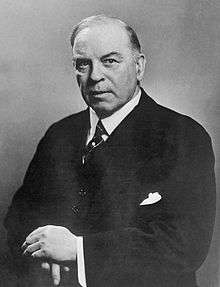University of Chicago
The University of Chicago (UChicago, U of C, or Chicago) is a private research university in Chicago, Illinois. Founded in 1890, the university is located on a 217-acre (88-hectare) campus in Chicago's Hyde Park neighborhood.[6] The university has a total of 16,445 enrolled students as of Fall 2019, including 6,286 undergraduates and 10,159 graduate students.[1] The University of Chicago is ranked among the top universities in the world by major education publications.[7][8][9][10][11]
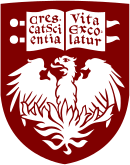 | |
| Latin: Universitas Chicaginiensis | |
| Motto | Crescat scientia; vita excolatur (Latin) |
|---|---|
Motto in English | Let knowledge grow from more to more; and so be human life enriched[1] |
| Type | Private |
| Established | 1890[1] |
Academic affiliations | AAU NAICU URA |
| Endowment | $8.5 billion (2019)[2] |
| President | Robert J. Zimmer |
| Provost | Ka Yee Christina Lee |
Academic staff | 2,859[3] |
Administrative staff | 15,949 (including employees of the University of Chicago Medical Center)[3] |
| Students | 16,445 |
| Undergraduates | 6,286[1] |
| Postgraduates | 10,159[1] |
| Location | , , United States |
| Campus | Urban 217 acres (87.8 ha) (Main Campus)[1] 41°47′23″N 87°35′59″W 42 acres (17.0 ha) (Warren Woods Ecological Field Station, Warren Woods State Park)[4] |
| Colors | Maroon[5] |
| Nickname | Maroons |
Sporting affiliations | NCAA Division III – UAA |
| Mascot | Phil the Phoenix |
| Website | www |
 | |
The university is composed of one undergraduate college and five graduate research divisions, which contain all of the university's graduate programs and interdisciplinary committees. Beyond the arts and sciences, Chicago is well known for its professional schools, which include the Pritzker School of Medicine, the Booth School of Business, the Law School, the School of Social Service Administration, the Harris School of Public Policy, the Divinity School and the Graham School of Continuing Liberal and Professional Studies, as well as the recently launched Pritzker School of Molecular Engineering. The university has additional campuses and centers in London, Paris, Beijing, Delhi, and Hong Kong, as well as in downtown Chicago.[12][13]
University of Chicago scholars have played a major role in the development of many academic disciplines, including economics, law, literary criticism, mathematics, religion, sociology, and the behavioralism school of political science, establishing the Chicago schools in various fields.[14][15][16][17][18] Chicago's Metallurgical Laboratory produced the world's first man-made, self-sustaining nuclear reaction in Chicago Pile-1 beneath the viewing stands of the university's Stagg Field.[19] Advances in chemistry led to the "radiocarbon revolution" in the carbon-14 dating of ancient life and objects.[20] The university research efforts include administration of Fermi National Accelerator Laboratory and Argonne National Laboratory, as well as the Marine Biological Laboratory. The university is also home to the University of Chicago Press, the largest university press in the United States.[21] The Barack Obama Presidential Center is expected to be housed at the university and will include both the Obama presidential library and offices of the Obama Foundation.[22]
The University of Chicago's students, faculty, and staff have included 100 Nobel laureates as of 2019, giving it the fourth-most affiliated Nobel laureates of any university in the world.[23] The university's faculty members and alumni also include 54 Rhodes Scholars,[24] 26 Marshall Scholars,[25] 9 Fields Medalists,[26] 4 Turing Award winners, 52 MacArthur Fellows,[27] 27 Pulitzer Prize winners,[28] 20 National Humanities Medalists[29] and 13 billionaire graduates.[30]
History
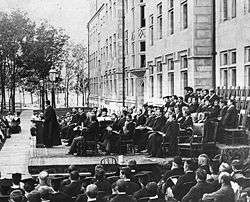
Early years
| Wikisource has the text of a 1911 Encyclopædia Britannica article about the founding and early years. |
The University of Chicago was incorporated as a coeducational[31] institution in 1890 by the American Baptist Education Society, using $400,000 donated to the ABES to match a $600,000 donation from Baptist oil magnate and philanthropist John D. Rockefeller,[32] and including land donated by Marshall Field.[33] While the Rockefeller donation provided money for academic operations and long-term endowment, it was stipulated that such money could not be used for buildings. The Hyde Park campus was financed by donations from wealthy Chicagoans like Silas B. Cobb who provided the funds for the campus' first building, Cobb Lecture Hall, and matched Marshall Field's pledge of $100,000. Other early benefactors included businessmen Charles L. Hutchinson (trustee, treasurer and donor of Hutchinson Commons), Martin A. Ryerson (president of the board of trustees and donor of the Ryerson Physical Laboratory) Adolphus Clay Bartlett and Leon Mandel, who funded the construction of the gymnasium and assembly hall, and George C. Walker of the Walker Museum, a relative of Cobb who encouraged his inaugural donation for facilities.[34]
The Hyde Park campus continued the legacy of the original university of the same name, which had closed in the 1880s after its campus was foreclosed on.[35] What became known as the Old University of Chicago had been founded by a small group of Baptist educators in 1856 through a land endowment from Senator Stephen A. Douglas. After a fire, it closed in 1886.[36] Alumni from the Old University of Chicago are recognized as alumni of the present University of Chicago.[37] The university's depiction on its coat of arms of a phoenix rising from the ashes is a reference to the fire, foreclosure, and demolition of the Old University of Chicago campus.[38] As an homage to this pre-1890 legacy, a single stone from the rubble of the original Douglas Hall on 34th Place was brought to the current Hyde Park location and set into the wall of the Classics Building. These connections have led the Dean of the College and University of Chicago and Professor of History John Boyer to conclude that the University of Chicago has, "a plausible genealogy as a pre–Civil War institution".[39]
William Rainey Harper became the university's president on July 1, 1891 and the Hyde Park campus opened for classes on October 1, 1892.[35] Harper worked on building up the faculty and in two years he had a faculty of 120, including eight former university or college presidents.[40] Harper was an accomplished scholar (Semiticist) and a member of the Baptist clergy who believed that a great university should maintain the study of faith as a central focus.[41] To fulfill this commitment, he brought the Baptist seminary that had begun as a department of Old University of Chicago but had separated from the old school decades earlier to Hyde Park. This became the Divinity School in 1891, the first professional school at the University of Chicago.[42]
Harper recruited acclaimed Yale baseball and football player Amos Alonzo Stagg from the Young Men's Christian Association training school at Springfield to coach the school's football program. Stagg was given a position on the faculty, the first such athletic position in the United States. While coaching at the University, Stagg invented the numbered football jersey, the huddle, and the lighted playing field. Stagg is the namesake of the university's Stagg Field.[43]
The business school was founded in 1898,[44] and the law school was founded in 1902.[45] Harper died in 1906[46] and was replaced by a succession of three presidents whose tenures lasted until 1929.[47] During this period, the Oriental Institute was founded to support and interpret archeological work in what was then called the Near East.[48]
In the 1890s, the university, fearful that its vast resources would injure smaller schools by drawing away good students, affiliated with several regional colleges and universities: Des Moines College, Kalamazoo College, Butler University, and Stetson University. In 1896, the university affiliated with Shimer College in Mount Carroll, Illinois. Under the terms of the affiliation, the schools were required to have courses of study comparable to those at the university, to notify the university early of any contemplated faculty appointments or dismissals, to make no faculty appointment without the university's approval, and to send copies of examinations for suggestions. The University of Chicago agreed to confer a degree on any graduating senior from an affiliated school who made a grade of A for all four years, and on any other graduate who took twelve weeks additional study at the University of Chicago. A student or faculty member of an affiliated school was entitled to free tuition at the University of Chicago, and Chicago students were eligible to attend an affiliated school on the same terms and receive credit for their work. The University of Chicago also agreed to provide affiliated schools with books and scientific apparatus and supplies at cost; special instructors and lecturers without cost except for travel expenses; and a copy of every book and journal published by the University of Chicago Press at no cost. The agreement provided that either party could terminate the affiliation on proper notice. Several University of Chicago professors disliked the program, as it involved uncompensated additional labor on their part, and they believed it cheapened the academic reputation of the university. The program passed into history by 1910.[49]
1920s–1980s
In 1929, the university's fifth president, 30-year-old legal philosophy scholar Robert Maynard Hutchins, took office. The university underwent many changes during his 24-year tenure. Hutchins reformed the undergraduate college's liberal-arts curriculum known as the Common Core,[50] organized the university's graduate work into four divisions,[51] and eliminated varsity football from the university in an attempt to emphasize academics over athletics.[51] During his term, the University of Chicago Hospitals (now called the University of Chicago Medical Center) finished construction and enrolled their first medical students.[52] Also, the philosophy oriented Committee on Social Thought, an institution distinctive of the university, was created.

Money that had been raised during the 1920s and financial backing from the Rockefeller Foundation helped the school to survive through the Great Depression.[51] Nonetheless, in 1933, Hutchins proposed an unsuccessful plan to merge the University of Chicago and Northwestern University into a single university.[53] During World War II, the university's Metallurgical Laboratory made ground-breaking contributions to the Manhattan Project.[54] The university was the site of the first isolation of plutonium and of the creation of the first artificial, self-sustained nuclear reaction by Enrico Fermi in 1942.[54][55]
It has been noted that the university did not provide standard oversight regarding Bruno Bettelheim and his tenure as director of the Orthogenic School for Disturbed Children from 1944 to 1973.[56][57][58]
In the early 1950s, student applications declined as a result of increasing crime and poverty in the Hyde Park neighborhood. In response, the university became a major sponsor of a controversial urban renewal project for Hyde Park, which profoundly affected both the neighborhood's architecture and street plan.[59] During this period the university, like Shimer College and 10 others, adopted an early entrant program that allowed very young students to attend college; also, students enrolled at Shimer were enabled to transfer automatically to the University of Chicago after their second year, having taken comparable or identical examinations and courses.
The university experienced its share of student unrest during the 1960s, beginning in 1962 when then-freshman Bernie Sanders helped lead a 15-day sit-in at the college's administration building in a protest over the university's off-campus rental policies. After continued turmoil, a university committee in 1967 issued what became known as the Kalven Report. The report, a two-page statement of the university's policy in "social and political action," declared that "To perform its mission in the society, a university must sustain an extraordinary environment of freedom of inquiry and maintain an independence from political fashions, passions, and pressures."[60] The report has since been used to justify decisions such as the university's refusal to divest from South Africa in the 1980s and Darfur in the late 2000s.[61]
In 1969, more than 400 students, angry about the dismissal of a popular professor, Marlene Dixon, occupied the Administration Building for two weeks. After the sit-in ended, when Dixon turned down a one-year reappointment, 42 students were expelled and 81 were suspended,[62] the most severe response to student occupations of any American university during the student movement.[63]
In 1978, history scholar Hanna Holborn Gray, then the provost and acting president of Yale University, became President of the University of Chicago, a position she held for 15 years. She was the first woman in the United States to hold the presidency of a major university.[64]
1990s–2010s
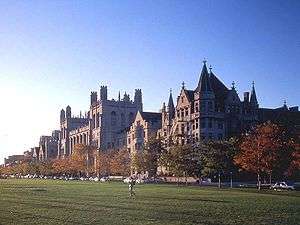
In 1999, then-President Hugo Sonnenschein announced plans to relax the university's famed core curriculum, reducing the number of required courses from 21 to 15. When The New York Times, The Economist, and other major news outlets picked up this story, the university became the focal point of a national debate on education. The changes were ultimately implemented, but the controversy played a role in Sonnenschein's decision to resign in 2000.[65]
From the mid-2000s, the university began a number of multimillion-dollar expansion projects. In 2008, the University of Chicago announced plans to establish the Milton Friedman Institute, which attracted both support and controversy from faculty members and students.[66][67][68][69][70] The institute will cost around $200 million and occupy the buildings of the Chicago Theological Seminary. During the same year, investor David G. Booth donated $300 million to the university's Booth School of Business, which is the largest gift in the university's history and the largest gift ever to any business school.[71] In 2009, planning or construction on several new buildings, half of which cost $100 million or more, was underway.[72] Since 2011, major construction projects have included the Jules and Gwen Knapp Center for Biomedical Discovery, a ten-story medical research center, and further additions to the medical campus of the University of Chicago Medical Center.[73] In 2014 the University launched the public phase of a $4.5 billion fundraising campaign.[74] In September 2015, the University received $100 million from The Pearson Family Foundation to establish The Pearson Institute for the Study and Resolution of Global Conflicts and The Pearson Global Forum at the Harris School of Public Policy Studies.[75]
On May 1, 2014, the University of Chicago was named one of fifty-five higher education institutions under investigation by the Office of Civil Rights "for possible violations of federal law over the handling of sexual violence and harassment complaints" by the White House Task Force to Protect Students from Sexual Assault.[76]
In 2019, the university created its first school in three decades, the Pritzker School of Molecular Engineering.[77][78]
Campus
Main campus
The main campus of the University of Chicago consists of 217 acres (87.8 ha) in the Chicago neighborhoods of Hyde Park and Woodlawn, approximately eight miles (12 km) south of downtown Chicago. The northern and southern portions of campus are separated by the Midway Plaisance, a large, linear park created for the 1893 World's Columbian Exposition. In 2011, Travel+Leisure listed the university as one of the most beautiful college campuses in the United States.[79]
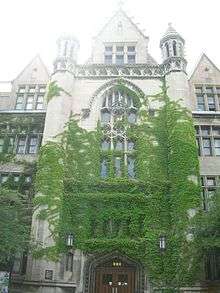
The first buildings of the campus, which make up what is now known as the Main Quadrangles, were part of a master plan conceived by two University of Chicago trustees and plotted by Chicago architect Henry Ives Cobb.[81] The Main Quadrangles consist of six quadrangles, each surrounded by buildings, bordering one larger quadrangle.[82] The buildings of the Main Quadrangles were designed by Cobb, Shepley, Rutan and Coolidge, Holabird & Roche, and other architectural firms in a mixture of the Victorian Gothic and Collegiate Gothic styles, patterned on the colleges of the University of Oxford.[81] (Mitchell Tower, for example, is modeled after Oxford's Magdalen Tower,[83] and the university Commons, Hutchinson Hall, replicates Christ Church Hall.[84]) In celebration of the 2018 Illinois Bicentennial, the University of Chicago Quadrangles were selected as one of the Illinois 200 Great Places[85] by the American Institute of Architects Illinois component (AIA Illinois).
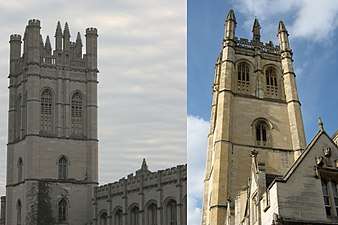
After the 1940s, the campus's Gothic style began to give way to modern styles.[81] In 1955, Eero Saarinen was contracted to develop a second master plan, which led to the construction of buildings both north and south of the Midway, including the Laird Bell Law Quadrangle (a complex designed by Saarinen);[81] a series of arts buildings;[81] a building designed by Ludwig Mies van der Rohe for the university's School of Social Service Administration,[81] a building which is to become the home of the Harris School of Public Policy Studies by Edward Durrell Stone, and the Regenstein Library, the largest building on campus, a brutalist structure designed by Walter Netsch of the Chicago firm Skidmore, Owings & Merrill.[86] Another master plan, designed in 1999 and updated in 2004,[87] produced the Gerald Ratner Athletics Center (2003),[87] the Max Palevsky Residential Commons (2001),[81] South Campus Residence Hall and dining commons (2009), a new children's hospital,[88] and other construction, expansions, and restorations.[89] In 2011, the university completed the glass dome-shaped Joe and Rika Mansueto Library, which provides a grand reading room for the university library and prevents the need for an off-campus book depository.
The site of Chicago Pile-1 is a National Historic Landmark and is marked by the Henry Moore sculpture Nuclear Energy.[90] Robie House, a Frank Lloyd Wright building acquired by the university in 1963, is a UNESCO World Heritage Site [91] as well as a National Historic Landmark,[92] as is room 405 of the George Herbert Jones Laboratory, where Glenn T. Seaborg and his team were the first to isolate plutonium.[93] Hitchcock Hall, an undergraduate dormitory, is on the National Register of Historic Places.[94]
- Campus of the University of Chicago
- Snell-Hitchcock, an undergraduate dormitory constructed in the early 20th century, is part of the Main Quadrangles.
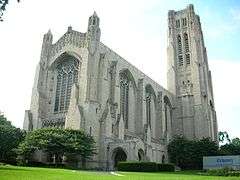 Rockefeller Chapel, constructed in 1928, was designed by Bertram Goodhue in the neo-Gothic style.
Rockefeller Chapel, constructed in 1928, was designed by Bertram Goodhue in the neo-Gothic style.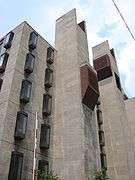 The Henry Hinds Laboratory for Geophysical Sciences was built in 1969.[95]
The Henry Hinds Laboratory for Geophysical Sciences was built in 1969.[95]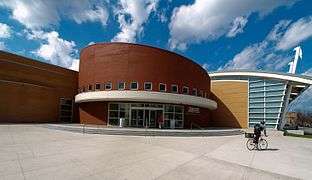 The Gerald Ratner Athletics Center, opened in 2003 and designed by Cesar Pelli, houses the volleyball, wrestling, swimming, and basketball teams.[96]
The Gerald Ratner Athletics Center, opened in 2003 and designed by Cesar Pelli, houses the volleyball, wrestling, swimming, and basketball teams.[96]
Satellite campuses
The university also maintains facilities apart from its main campus. The university's Booth School of Business maintains campuses in Hong Kong, London, and the downtown Streeterville neighborhood of Chicago. The Center in Paris, a campus located on the left bank of the Seine in Paris, hosts various undergraduate and graduate study programs.[97] In fall 2010, the university opened a center in Beijing, near Renmin University's campus in Haidian District. The most recent additions are a center in New Delhi, India, which opened in 2014, and a center in Hong Kong which opened in 2015.
Administration and finances
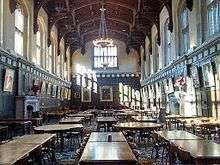
The university is governed by a board of trustees. The Board of Trustees oversees the long-term development and plans of the university and manages fundraising efforts, and is composed of 55 members including the university President.[98] Directly beneath the President are the Provost, fourteen Vice Presidents (including the Chief Financial Officer, Chief Investment Officer, and Vice President for Campus Life and Student Services), the Directors of Argonne National Laboratory and Fermilab, the Secretary of the university, and the Student Ombudsperson.[99] As of May 2016, the Chairman of the Board of Trustees is Joseph Neubauer,[100] and the President of the university is Robert Zimmer. In December 2013 it was announced that the Director of Argonne National Laboratory, Eric Isaacs, would become Provost. Isaacs was replaced as Provost in March 2016 by Daniel Diermeier.[101]
The university's endowment was the 12th largest among American educational institutions and state university systems in 2013[102] and as of 2018 was valued at $8.2 billion.[103] Part of President Zimmer's financial plan for the university has been an increase in accumulation of debt to finance large building projects.[104] This has drawn both support and criticism from many in the university community.
Academics
.jpg)
The academic bodies of the University of Chicago consist of the College, five divisions of graduate research, six professional schools, and the Graham School of Continuing Liberal and Professional Studies. The university also contains a library system, the University of Chicago Press, and the University of Chicago Medical Center, and oversees several laboratories, including Fermi National Accelerator Laboratory (Fermilab), Argonne National Laboratory, and the Marine Biological Laboratory. The university is accredited by The Higher Learning Commission.
The university runs on a quarter system in which the academic year is divided into four terms: Summer (June–August), Autumn (September–December), Winter (January–March), and Spring (April–June).[106] Full-time undergraduate students take three to four courses every quarter[107] for approximately eleven weeks before their quarterly academic breaks. The school year typically begins in late September and ends in mid-June.[106]
Rankings
| University rankings | |
|---|---|
| National | |
| ARWU[108] | 8 |
| Forbes[109] | 16 |
| THE/WSJ[110] | 14 |
| U.S. News & World Report[111] | 6 |
| Washington Monthly[112] | 37 |
| Global | |
| ARWU[113] | 10 |
| QS[114] | 9 |
| THE[115] | 9 |
| U.S. News & World Report[116] | 13 |
The University of Chicago has an extensive record of producing successful business leaders and billionaires.[30][117][118][119] ARWU has consistently placed the University of Chicago among the top 10 universities in the world,[120] and the 2020 QS World University Rankings placed the university in 10th place worldwide.[121] The university's law and business schools rank among the top five professional schools in the United States.[122] The business school is currently ranked first in the US by US News & World Report[123] and first in the world by The Economist,[124] while the law school is ranked fourth by US News & World Report[125] and first by Above the Law.[126]
Chicago has also been consistently recognized to be one of the top 15 university brands in the world,[127] retaining the number three spot in the 2019 U.S. News Best Colleges Rankings.[128] In a corporate study carried out by The New York Times, the university's graduates were shown to be among the most valued in the world.[129]
Undergraduate college
The College of the University of Chicago grants Bachelor of Arts and Bachelor of Science degrees in 51 academic majors[130] and 33 minors.[131] The college's academics are divided into five divisions: the Biological Sciences Collegiate Division, the Physical Sciences Collegiate Division, the Social Sciences Collegiate Division, the Humanities Collegiate Division, and the New Collegiate Division.[132] The first four are sections within their corresponding graduate divisions, while the New Collegiate Division administers interdisciplinary majors and studies which do not fit in one of the other four divisions.[133]
Undergraduate students are required to take a distribution of courses to satisfy the university's general education requirements, commonly known as the Common Core. In 2012–2013, the Core classes at Chicago were limited to 17 courses, and are generally led by a full-time professor (as opposed to a teaching assistant).[134] As of the 2013–2014 school year, 15 courses and demonstrated proficiency in a foreign language are required under the Core.[135] Undergraduate courses at the University of Chicago are known for their demanding standards, heavy workload and academic difficulty; according to Uni in the USA, "Among the academic cream of American universities – Harvard, Yale, Princeton, MIT, and the University of Chicago – it is UChicago that can most convincingly claim to provide the most rigorous, intense learning experience."[136]
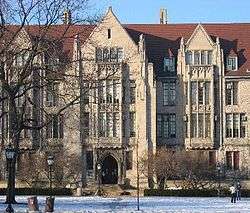
Graduate schools and committees
The university graduate schools and committees are divided into five divisions: Biological Sciences, Humanities, Physical Sciences, Social Sciences, and the Institute for Molecular Engineering.[137] In the autumn quarter of 2015, the university enrolled 3,588 graduate students: 438 in the Biological Sciences Division, 801 in the Humanities Division, 1,102 in the Physical Sciences Division, 1,165 in the Social Sciences Division, and 52 in the Institute for Molecular Engineering.[138]
The university is home to several committees for interdisciplinary scholarship, including the John U. Nef Committee on Social Thought.
Professional schools
The university contains seven professional schools: the Pritzker School of Medicine, the Booth School of Business, the University of Chicago Law School, the University of Chicago Divinity School, the University of Chicago Harris School of Public Policy Studies, and the University of Chicago School of Social Service Administration. The Graham School of Continuing Liberal and Professional Studies offers non-degree courses and certificates as well as degree programs.[139]
The Law School is accredited by the American Bar Association, the Divinity School is accredited by the Commission on Accrediting of the Association of Theological Schools in the United States and Canada, Pritzker is accredited by the Liaison Committee on Medical Education.
Associated academic institutions
The university runs a number of academic institutions and programs apart from its undergraduate and postgraduate schools. It operates the University of Chicago Laboratory Schools (a private day school for K-12 students and day care),[140] and a public charter school with four campuses on the South Side of Chicago administered by the university's Urban Education Institute.[141] In addition, the Hyde Park Day School, a school for students with learning disabilities,[142] and the Sonia Shankman Orthogenic School, a residential treatment program for those with behavioral and emotional problems,[143] maintains a location on the University of Chicago campus. Since 1983, the University of Chicago has maintained the University of Chicago School Mathematics Project, a mathematics program used in urban primary and secondary schools.[144] The university runs a program called the Council on Advanced Studies in the Humanities and Social Sciences, which administers interdisciplinary workshops to provide a forum for graduate students, faculty, and visiting scholars to present scholarly work in progress.[145] The university also operates the University of Chicago Press, the largest university press in the United States.[146]
Library system
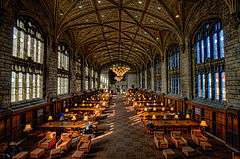
The University of Chicago Library system encompasses six libraries that contain a total of 11 million volumes, the 9th most among library systems in the United States.[147] The university's main library is the Regenstein Library, which contains one of the largest collections of print volumes in the United States. The Joe and Rika Mansueto Library, built in 2011, houses a large study space and an automated book storage and retrieval system. The John Crerar Library contains more than 1.4 million volumes in the biological, medical and physical sciences and collections in general science and the philosophy and history of science, medicine, and technology.[148] The university also operates a number of special libraries, including the D'Angelo Law Library, the Social Service Administration Library, and the Eckhart Library for mathematics and computer science.[149][150] Harper Memorial Library is now a reading and study room.
Research
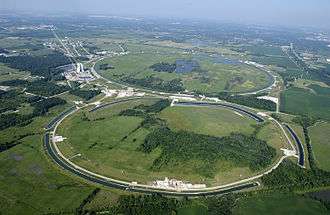
According to the National Science Foundation, University of Chicago spent $423.9 million on research and development in 2018, ranking it 60th in the nation.[151] It is classified among "R1: Doctoral Universities – Very high research activity"[152] and is a founding member of the Association of American Universities and was a member of the Committee on Institutional Cooperation from 1946 through June 29, 2016, when the group's name was changed to the Big Ten Academic Alliance. The University of Chicago is not a member of the rebranded consortium, but will continue to be a collaborator.[153][154]
The university operates more than 140 research centers and institutes on campus.[155] Among these are the Oriental Institute—a museum and research center for Near Eastern studies owned and operated by the university—and a number of National Resource Centers, including the Center for Middle Eastern Studies. Chicago also operates or is affiliated with several research institutions apart from the university proper. The university manages Argonne National Laboratory, part of the United States Department of Energy's national laboratory system, and co-manages Fermi National Accelerator Laboratory (Fermilab) , a nearby particle physics laboratory, as well as a stake in the Apache Point Observatory in Sunspot, New Mexico. Faculty and students at the adjacent Toyota Technological Institute at Chicago collaborate with the university.[156] In 2013, the university formed an affiliation with the formerly independent Marine Biological Laboratory in Woods Hole, Mass.[157] Although formally unrelated, the National Opinion Research Center is located on Chicago's campus.
The University of Chicago has been the site of some important experiments and academic movements. In economics, the university has played an important role in shaping ideas about the free market[158] and is the namesake of the Chicago school of economics, the school of economic thought supported by Milton Friedman and other economists. The university's sociology department was the first independent sociology department in the United States and gave birth to the Chicago school of sociology.[159] In physics, the university was the site of the Chicago Pile-1 (the first controlled, self-sustaining man-made nuclear chain reaction, part of the Manhattan Project), of Robert Millikan's oil-drop experiment that calculated the charge of the electron,[160] and of the development of radiocarbon dating by Willard F. Libby in 1947. The chemical experiment that tested how life originated on early Earth, the Miller–Urey experiment, was conducted at the university. REM sleep was discovered at the university in 1953 by Nathaniel Kleitman and Eugene Aserinsky.[161]
The University of Chicago (Department of Astronomy and Astrophysics) operated the Yerkes Observatory in Williams Bay, Wisconsin from 1897 until 2018,[162] where the largest operating refracting telescope in the world and other telescopes are located.
Arts
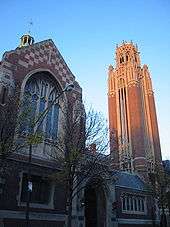
The UChicago Arts program joins academic departments and programs in the Division of the Humanities and the college, as well as professional organizations including the Court Theatre, the Oriental Institute, the Smart Museum of Art, the Renaissance Society, University of Chicago Presents, and student arts organizations. The university has an artist-in-residence program and scholars in performance studies, contemporary art criticism, and film history. It has offered a doctorate in music composition since 1933 and cinema and media studies since 2000, a master of fine arts in visual arts (early 1970s), and a master of arts in the humanities with a creative writing track (2000). It has bachelor's degree programs in visual arts, music, and art history, and, more recently, cinema and media studies (1996) and theater and performance studies (2002). The college's general education core includes a "dramatic, musical, and visual arts" requirement, inviting students to study the history of the arts, stage desire, or begin working with sculpture. Several thousand major and non-major undergraduates enroll annually in creative and performing arts classes.[163] UChicago is often considered the birthplace of improvisational comedy as the Compass Players student comedy troupe evolved into The Second City improv theater troupe in 1959. The Reva and David Logan Center for the Arts opened in October 2012, five years after a $35 million gift from alumnus David Logan and his wife Reva. The center includes spaces for exhibitions, performances, classes, and media production. The Logan Center was designed by Tod Williams and Billie Tsien. This building is entirely glass. The brick is a facade designed to keep the glass safe from the wind. The architects later removed sections of the bricks when pressure arose in the form of complaints that the views of the city were blocked.
Student body and admissions
| By sex[164] | ||||
|---|---|---|---|---|
| College | Graduate schools | Professional schools | University total | |
| Male | 52.64% | 60.15% | 59.84% | 57.09% |
| Female | 47.36% | 39.85% | 40.16% | 42.91% |
| By race[164] | ||||
| College | Graduate schools | Professional schools | University total | |
| International student | 11.05% | 34.91% | 24.05% | 21.52% |
| African American | 5.30% | 2.64% | 4.27% | 4.34% |
| Native American | 0.23% | 0.30% | 0.16% | 0.22% |
| Arab/Middle Eastern/ North African |
0.20% | 1.03% | 0.30% | 0.46% |
| Asian | 17.22% | 5.82% | 12.76% | 12.83% |
| Pacific Islander | 0.05% | 0.03% | 0.02% | 0.04% |
| Hispanic/Latino | 8.73% | 5.24% | 5.79% | 6.92% |
| Multiracial | 3.61% | 2.06% | 1.66% | 2.51% |
| White | 43.74% | 36.33% | 44.79% | 42.42% |
| Unspecified | 9.88% | 10.42% | 6.20% | 8.73% |
In Fall 2018, the university enrolled 6,595 undergraduate students, 9,899 graduate students, and 616 non-degree students.[165] The college class of 2022 is composed of 51% male students and 49% female students. 23% of the class identify as Asian, 15% as Hispanic, and 9% as Black. 15% of the class is international.[166]
Admissions to the University of Chicago is highly selective. The middle 50% band of SAT scores for the undergraduate class of 2022 was 1490–1560 (98th-99th percentiles),[166] the average MCAT score for students entering the Pritzker School of Medicine class of 2022 was 518 (96th percentile),[167] the median GMAT score for students entering the full-time Booth MBA program class of 2021 was 730 (96th percentile),[168] and the median LSAT score for entering students the Law School class of 2021 was 171 (98th percentile).[169] For the class of 2024, the College of the University of Chicago had an acceptance rate of 6.2%.[170]
In 2018, the University of Chicago attracted national headlines by becoming the first major research university to no longer require SAT/ACT scores from college applicants.[171]
Athletics
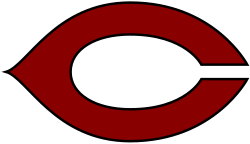
The University of Chicago hosts 19 varsity sports teams: 10 men's teams and 9 women's teams,[172] all called the Maroons, with 502 students participating in the 2012–2013 school year.[172]
The Maroons compete in the NCAA's Division III as members of the University Athletic Association (UAA). The university was a founding member of the Big Ten Conference and participated in the NCAA Division I men's basketball and football and was a regular participant in the men's basketball tournament. In 1935, the University of Chicago reached the Sweet Sixteen.[172] In 1935, Chicago Maroons football player Jay Berwanger became the first winner of the Heisman Trophy. However, the university chose to withdraw from the Big Ten Conference in 1946 after University President Robert Maynard Hutchins de-emphasized varsity athletics in 1939 and dropped football.[173] In 1969, Chicago reinstated football as a Division III team, resuming playing its home games at the new Stagg Field. UChicago is also the home of the ultimate frisbee team Chicago Junk.[174]
Student life
Student organizations
Students at the University of Chicago operate more than 400 clubs and organizations known as Recognized Student Organizations (RSOs).[175][176] These include cultural and religious groups, academic clubs and teams, and common-interest organizations.[176] Notable extracurricular groups include the University of Chicago College Bowl Team, which has won 118 tournaments and 15 national championships, leading both categories internationally. The university's competitive Model United Nations team was the top-ranked team in North America in 2013–14, 2014–2015, 2015–2016, and again for the 2017–2018 season. The University's Model UN team is also the first to be in the top 5 for almost a decade, according to Best Delegate. Among notable student organizations are the nation's longest continuously running student film society Doc Films, the organizing committee for the University of Chicago Scavenger Hunt, the weekly student newspaper The Chicago Maroon, the satirical Chicago Shady Dealer,[177] the nation's second-oldest continuously running student improvisational theater troupe Off-Off Campus, and the investment club The Blue Chips.
Student government
All Recognized Student Organizations, from the University of Chicago Scavenger Hunt to Model UN, in addition to academic teams, sports clubs, arts groups, and more are funded by The University of Chicago Student Government. Student Government consists of graduate and undergraduate students elected to represent members from their respective academic units. It is led by an Executive Committee, chaired by a President with the assistance of two Vice Presidents, one for Administration and the other for Student Life, elected together as a slate by the student body each spring. Its annual budget is greater than $2 million.[178]
Fraternities and sororities
There are 16 Fraternities at the university: Alpha Delta Phi (Chicago Chapter), Alpha Epsilon Pi (Lambda Chapter), Alpha Phi Alpha (Theta Chapter), Delta Epsilon Psi (Alpha Kappa), Delta Kappa Epsilon (Delta Delta), Delta Tau Delta (Gamma Alpha), Delta Upsilon(Chicago Chapter), Kappa Alpha Psi (Iota Chapter), Lambda Phi Epsilon (Psi Chapter), Phi Delta Theta (Beta Chapter), Phi Gamma Delta (Chi Upsilon Chapter), Phi Iota Alpha (Chicago Colony Chapter), Psi Upsilon (Omega Chapter), Sigma Chi (Omicron Omicron Chapter), Sigma Phi Epsilon (Omicron Omicron Chapter) and Zeta Psi (Omega Alpha Chapter). There are Six Sororities are Alpha Kappa Alpha (Beta Chapter), Alpha Omicron Pi (Phi Chi Chapter), Delta Gamma (Eta Zeta Chapter), Delta Sigma Theta (Lambda Chapter), Kappa Alpha Theta (Epsilon Phi Chapter) and Pi Beta Phi (Kappa Chapter) at the University of Chicago,[179] as well as one co-ed community service fraternity are Alpha Phi Omega(Gamma Sigma Chapter).[180] Social fraternities and sororities are not recognized by the university as registered student organizations. Four of the sororities are members of the National Panhellenic Conference[181] There is no Interfraternity Council on campus. As of 2017, approximately 20 to 25 percent of students are members of fraternities or sororities.[181] This is an increase from the numbers published in the year 2007 by the student activities office stating that one in ten undergraduates participated in Greek life.[179]
Student housing
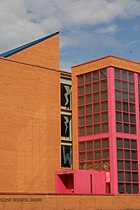
On-campus undergraduate students at the University of Chicago participate in a house system in which each student is assigned to one of the university's 7 residence hall buildings and to a smaller community within their residence hall called a "House". There are 39 houses, with an average of 70 students in each House.[182] Traditionally only first years were required to live in housing, starting with the Class of 2023, students are required to live in housing for the first 2 years of enrollment.[183] About 60% of undergraduate students live on campus.[183]
For graduate students, the university owns and operates 28 apartment buildings near campus.[184]
Traditions

Every May since 1987, the University of Chicago has held the University of Chicago Scavenger Hunt, in which large teams of students compete to obtain notoriously esoteric items from a list.[185] Since 1963, the Festival of the Arts (FOTA) takes over campus for 7–10 days of exhibitions and interactive artistic endeavors.[186] Every January, the university holds a week-long winter festival, Kuviasungnerk/Kangeiko, which includes early morning exercise routines and fitness workshops. The university also annually holds a summer carnival and concert called Summer Breeze that hosts outside musicians and is home to Doc Films, a student film society founded in 1932 that screens films nightly at the university. Since 1946, the university has organized the Latke-Hamantash Debate, which involves humorous discussions about the relative merits and meanings of latkes and hamantashen.
People
As of October 2019, there have been 100 Nobel laureates affiliated with the University of Chicago,[187] 20 of whom were pursuing research or on faculty at the university at the time of the award announcement.[188] Notable alumni and faculty affiliated with the university include 33 Nobel laureates in Economics.[189] No university has had more affiliated Nobel laureates in Economics.[190]
In addition, many Chicago alumni and scholars have won the Fulbright awards[191] and 53 have matriculated as Rhodes Scholars.[24]
Alumni
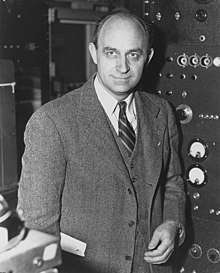
In 2019, the University of Chicago claimed 188,000 alumni.[1] While the university's first president, William Rainey Harper stressed the importance of perennial theory over practicality in his institution's curriculum, this has not stopped the alumni of Chicago from being among the wealthiest in the world.[117][118][119]
In business, notable alumni include Microsoft CEO Satya Nadella, Oracle Corporation founder and the third richest man in America Larry Ellison, Goldman Sachs and MF Global CEO as well as former Governor of New Jersey Jon Corzine, McKinsey & Company founder and author of the first management accounting textbook James O. McKinsey, co-founder of the Blackstone Group Peter G. Peterson, co-founder of AQR Capital Management Cliff Asness, founder of Dimensional Fund Advisors David Booth, founder of The Carlyle Group David Rubenstein, former COO of Goldman Sachs Andrew Alper, billionaire investor and founder of Oaktree Capital Management Howard Marks (investor), Bloomberg L.P. CEO Daniel Doctoroff, Credit Suisse CEO Brady Dougan, Morningstar, Inc. founder and CEO Joe Mansueto, Chicago Cubs owner and chairman Thomas S. Ricketts, and NBA commissioner Adam Silver.
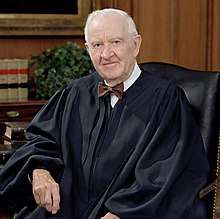
Notable alumni in the field of law, government and politics include Supreme Court Justice John Paul Stevens, the Lord Chief Justice of England and Wales Lord Thomas of Cwmgiedd, President of the Supreme Court of Israel Shimon Agranat, Attorney General and federal judge Robert Bork, Attorneys General Ramsey Clark, John Ashcroft and Edward Levi, Prime Minister of Canada William Lyon Mackenzie King, 33rd Prime Minister of New Zealand Geoffrey Palmer (politician), 11th Prime Minister of Poland Marek Belka, Governor of the Bank of Japan Masaaki Shirakawa, advisor to Presidents Barack Obama and Bill Clinton David Axelrod, the founder of modern community organizing Saul Alinsky, Prohibition agent Eliot Ness, current Chicago mayor Lori Lightfoot, the first female African-American Senator Carol Moseley Braun, United States Senator from Vermont and Democratic presidential candidate in 2016 and 2020 Bernie Sanders, former World Bank President Paul Wolfowitz, and Amien Rais (Ph.D. 1984) – professor; former chairman of the People's Consultative Assembly of the Republic of Indonesia.
Notable alumni, who are leaders in higher education, have emerged from almost all parts of the university: college president and chancellor Rebecca Chopp; current president of Middlebury College Laurie L. Patton; Master of Clare College, Cambridge and Vice-Chancellor of University of Cambridge Eric Ashby, Baron Ashby; president of Princeton University Christopher L. Eisgruber; former president of Morehouse College Robert M. Franklin, Jr.; President of the Open University of Israel Jacob Metzer; and president of Shimer College Susan Henking.
In journalism, notable alumni include New York Times columnist and commentator on PBS News Hour David Brooks, Washington Post columnist David Broder, Washington Post publisher Katharine Graham, reporter and commentator Virginia Graham, investigative journalist and political writer Seymour Hersh, The Progressive columnist Milton Mayer, four-time Pulitzer Prize winning journalist Rick Atkinson, statistical analyst and FiveThirtyEight founder and creator Nate Silver, and CBS News correspondent Rebecca Jarvis.
In literature, author of the New York Times bestseller Before I Fall Lauren Oliver, Pulitzer Prize-winning novelist Philip Roth; Canadian-born Pulitzer Prize and Nobel Prize for Literature winning writer Saul Bellow; political philosopher, literary critic and author of the New York Times bestseller The Closing of the American Mind Allan Bloom; author of The Big Country and Matt Helm spy novels Donald Hamilton; The Good War author Studs Terkel; writer, essayist, filmmaker, teacher, and political activist Susan Sontag; analytic philosopher and Stanford University Professor of Comparative literature Richard Rorty; cultural commentator, author, and president of St. Stephen's College (now Bard College) Bernard Iddings Bell; and novelist and satirist Kurt Vonnegut are notable alumni.
In the arts and entertainment, minimalist composer Philip Glass, dancer, choreographer and leader in the field of dance anthropology Katherine Dunham, Bungie founder and developer of the Halo video game series Alex Seropian, Serial host Sarah Koenig, actor Ed Asner, actress Anna Chlumsky, Pulitzer Prize for Criticism winning film critic and the subject of the 2014 documentary film Life Itself Roger Ebert, director, writer, and comedian Mike Nichols, film director and screenwriter Philip Kaufman, and photographer and writer Carl Van Vechten, photographer and writer, are graduates.
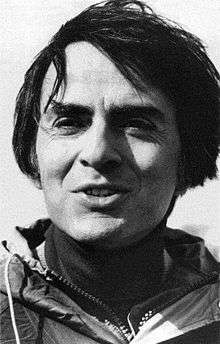
In science, alumni include astronomers Carl Sagan, a prominent contributor to the scientific research of extraterrestrial life, and Edwin Hubble, known for "Hubble's Law", NASA astronaut John M. Grunsfeld, geneticist James Watson, best known as one of the co-discoverers of the structure of DNA, experimental physicist Luis Alvarez, popular environmentalist David Suzuki, balloonist Jeannette Piccard, biologists Ernest Everett Just and Lynn Margulis, computer scientist Richard Hamming, the creator of the Hamming Code, lithium-ion battery developer John B. Goodenough, mathematician and Fields Medal recipient Paul Joseph Cohen, geochemist Clair Cameron Patterson, who developed the uranium-lead dating method into lead-lead dating, geologist and geophysicist M. King Hubbert, known for the Hubbert curve and Hubbert peak theory, the main components of peak oil, and "Queen of Carbon" Mildred Dresselhaus. Nuclear physicist and researcher Stanton Friedman, who worked on some early projects involving nuclear-powered spacecraft propulsion systems, is also a graduate (M.Sc). Ray Solomonoff, one of the founders of the field of machine learning as well as Kolmogorov complexity, got a BS and MS in Physics in 1951, studying under Rudolf Carnap.
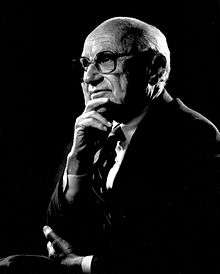
In economics, notable Nobel Memorial Prize in Economic Sciences winners Milton Friedman, a major advisor to Republican U.S. President Ronald Reagan, Conservative British Prime Minister Margaret Thatcher and Chilean military dictator Augusto Pinochet, George Stigler, Nobel laureate and proponent of regulatory capture theory, Herbert A. Simon, responsible for the modern interpretation of the concept of organizational decision-making, Paul Samuelson, the first American to win the Nobel Memorial Prize in Economic Sciences, and Eugene Fama, known for his work on portfolio theory, asset pricing and stock market behavior, are all graduates. American economist, social theorist, political philosopher, and author Thomas Sowell is also an alumnus. Brazil's Minister of the Economy Paulo Guedes received his Ph.D. from UChicago in 1978.
Other prominent alumni include anthropologists David Graeber and Donald Johanson, who is best known for discovering the fossil of a female hominid australopithecine known as "Lucy" in the Afar Triangle region, psychologist John B. Watson, American psychologist who established the psychological school of behaviorism, communication theorist Harold Innis, chess grandmaster Samuel Reshevsky, and conservative international relations scholar and White House Coordinator of Security Planning for the National Security Council Samuel P. Huntington.
American Civil Rights Movement leaders Vernon Johns, considered by some to be the founder of the American Civil Rights Movement, American educator, socialist and cofounder of the Highlander Folk School Myles Horton, civil rights attorney and chairman of the Fair Employment Practices Committee Earl B. Dickerson, Tuskegee Airmen commander Benjamin O. Davis, Jr., African-American history scholar and journalist Carter G. Woodson, and Nubian scholar Solange Ashby are all alumni.
Three students from the university have been prosecuted in notable court cases: the infamous thrill killers Nathan Leopold and Richard Loeb and high school science teacher John T. Scopes who was tried in the Scopes Monkey Trial for teaching evolution.
Faculty
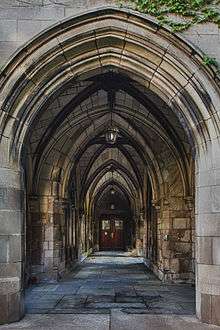
Notable faculty in economics include Frank Knight, Milton Friedman, George Stigler, James Heckman, Gary Becker, Robert Fogel, Robert Lucas, Jr., and Eugene Fama.[189] Additionally, the John Bates Clark Medal, which is rewarded annually to the best economist under the age of 40, has also been awarded to 4 current members of the university faculty.[192]
Notable faculty in physics have included the speed of light calculator A. A. Michelson, elementary charge calculator Robert A. Millikan, discoverer of the Compton Effect Arthur H. Compton, the creator of the first nuclear reactor Enrico Fermi, "the father of the hydrogen bomb" Edward Teller, "one of the most brilliant and productive experimental physicists of the twentieth century" Luis Walter Alvarez, Murray Gell-Mann who introduced the quark, second female Nobel laureate Maria Goeppert-Mayer, the youngest American winner of the Nobel Prize Tsung-Dao Lee, and astrophysicist Subrahmanyan Chandrasekhar.
In law, former U.S. President Barack Obama, the most cited legal scholar of the 20th century Richard Posner, Supreme Court justices Elena Kagan, Antonin Scalia, and John Paul Stevens, and Nobel laureate in Economics Ronald Coase have served on the faculty. Other distinguished scholars who have served on the faculty include Karl Llewellyn, Edward Levi, and Cass Sunstein.
Philosophers who were members of the faculty include Nobel Prize in Literature|Nobel Prize-winning philosopher Bertrand Russell, John Dewey (central figure in pragmatism and founder of functional psychology), philosopher and political theorist Hannah Arendt, George H. Mead (who is considered one of the founders of social psychology and the American sociological tradition), and Leo Strauss (prominent philosopher and the founder of the Straussian School in philosophy). Notable writers T.S. Eliot, Ralph Ellison and J.M. Coetzee have all served on the faculty.
Past faculty have also included egyptologist James Henry Breasted, biochemist and National Women's Hall of Fame member Florence B. Seibert, mathematician Alberto Calderón, Friedrich Hayek (one of the leading figures of the Austrian School of Economics and Nobel prize winner), meteorologist Ted Fujita, chemists Glenn T. Seaborg, Yuan T. Lee (the developer of the actinide concept and Nobel Prize winner), Nobel Prize winning novelist Saul Bellow, political philosopher and author Allan Bloom, conservative political philosopher and historian Richard M. Weaver, cancer researchers Charles Brenton Huggins and Janet Rowley, biologist Susan Lindquist, astronomer Gerard Kuiper, one of the most important figures in the early development of the discipline of linguistics Edward Sapir, and the founder of McKinsey & Co., James O. McKinsey.
Current faculty include the philosophers Jean-Luc Marion, James F. Conant, Robert Pippin, and Kyoto Prize winner Martha Nussbaum; anthropologist Marshall Sahlins; historians Dipesh Chakrabarty, David Nirenberg, and Kenneth Pomeranz; linguistic anthropology Michael Silverstein; paleontologists Neil Shubin and Paul Sereno; evolutionary biologist Jerry Coyne; Nobel Prize-winning physicist James Cronin; Nobel Prize-winning economists Eugene Fama, James Heckman, Lars Peter Hansen, Roger Myerson, Richard Thaler, and Robert Lucas, Jr.; Freakonomics author and noted economist Steven Levitt; erstwhile governor of India's central bank Raghuram Rajan; former Chairman of President Barack Obama's Council of Economic Advisors Austan Goolsbee; and political scientists John Mearsheimer and Robert Pape.
References
- "About the University". The University of Chicago. 2019. Retrieved November 24, 2019.
- As of June 30, 2019. "University of Chicago endowment grows to $8.5 billion". University of Chicago. October 16, 2019.
- "Faculty and Staff, at a glance". University of Chicago Data. University of Chicago. Archived from the original on March 31, 2019. Retrieved March 13, 2019.
- "University of Chicago opens groundbreaking sustainable field station". The University of Chicago. Archived from the original on March 14, 2016. Retrieved July 8, 2015.
- The University of Chicago Identity Guidelines (PDF). Archived (PDF) from the original on October 25, 2018. Retrieved September 18, 2018.
- AvenueChicago, The University of ChicagoEdward H. Levi Hall5801 South Ellis; Us, Illinois 60637773 702 1234 Contact. "About the University". The University of Chicago. Archived from the original on April 2, 2016. Retrieved March 14, 2019.
- "University of Chicago". Times Higher Education (THE). April 17, 2020. Retrieved May 14, 2020.
- "UChicago's U.S. News Ranking Slips to No. 6, After Three Years at No. 3". www.chicagomaroon.com. Retrieved May 29, 2020.
- "University of Chicago Ranking 2019-2020 - Center for World University Rankings (CWUR)". cwur.org. Retrieved May 14, 2020.
- "University of Chicago Rankings". Top Universities. Retrieved May 14, 2020.
- "University of Chicago - US News Best Global Universities". US News & World Report. Retrieved May 14, 2020.
- "UChicago Global | The University of Chicago". global.uchicago.edu. Archived from the original on March 31, 2019. Retrieved March 31, 2019.
- "Downtown Campus - Gleacher Center". The University of Chicago Booth School of Business. Archived from the original on March 31, 2019. Retrieved March 31, 2019.
- "Chicago school (sociology)" Check
|url=value (help). November 28, 2017. Cite journal requires|journal=(help) - "History of Law and Economics" (PDF). University of Montreal. Archived (PDF) from the original on November 22, 2009. Retrieved August 26, 2009.
- "The Chicago School". Britanica Academic Edition. Archived from the original on November 22, 2012. Retrieved October 12, 2011.
- Hanson, John Mark. "Building the Chicago School" (PDF). Archived (PDF) from the original on January 16, 2011. Retrieved February 6, 2012.
- "Antoni Zygmund (1900-1992)". www-history.mcs.st-and.ac.uk. Archived from the original on February 20, 2019. Retrieved June 23, 2019.
- Angelo, Joseph A. (November 30, 2004). Nuclear Technology. Greenwood Press. p. 1. doi:10.1336/1573563366. ISBN 1-57356-336-6.
- "Radiocarbon Dating". American Chemical Society. Retrieved May 17, 2020.
- "Duffy is named Director of the University Press". The University of Chicago Chronicle. April 27, 2000. Archived from the original on February 24, 2011. Retrieved April 30, 2006.
- "The Obama Presidential Center". BarackObamaFoundation.org. Archived from the original on May 14, 2015. Retrieved November 20, 2015.
- "Nobel Laureates". Archived from the original on March 21, 2016. Retrieved April 3, 2016.
- "Rhodes Scholarships – Number of Winners by Institution – U.S. Rhodes Scholars 1904–2016" (PDF). The Rhodes Trust. Archived (PDF) from the original on February 21, 2016. Retrieved May 23, 2016.
- "Statistics". Marshallscholarship.org. Archived from the original on January 26, 2017. Retrieved January 26, 2017.
- "Fields Medalists". University of Chicago. Archived from the original on April 19, 2016. Retrieved April 3, 2016.
- "MacArthur Fellows". The University of Chicago. Archived from the original on July 6, 2016. Retrieved July 8, 2016.
- "Pulitzer Prize Winners". Archived from the original on April 19, 2018. Retrieved April 19, 2018.
- "National Humanities Medalists". Archived from the original on March 19, 2016. Retrieved April 3, 2016.
- Janhavi Kumar Sapra (August 11, 2010). "Billionaire Universities". Forbes. Archived from the original on May 15, 2011. Retrieved August 31, 2010.
- Goodspeed, Thomas Wakefield (1916). A History of the University of Chicago. Chicago: The University of Chicago Press. p. 137. ISBN 0-226-30367-5.
- "The Decennial Publications of the University of Chicago". Science. Chicago: The University of Chicago Press. 1 (501): 498. 1903. Bibcode:1904Sci....20..187.. doi:10.1126/science.20.501.187.
- "History". University of Chicago. Archived from the original on May 26, 2011. Retrieved May 26, 2011.
- "The University of Chicago and its Donors, 1889–1930". University of Chicago. Archived from the original on November 9, 2015. Retrieved November 28, 2015.
- Rudolph, Frederick (1962). The American College and University: A History. Knopf. p. 351. ISBN 978-0-8203-1284-2.
- "Agreement Between Stephen A. Douglas and John C. Burroughs (1856), Folder 2, Box 3, Old University of Chicago Records, Special Collections, University of Chicago" (PDF). UChicago.edu. Archived (PDF) from the original on September 5, 2018. Retrieved June 26, 2017.
- John Boyer, The University of Chicago: A History (Chicago: University of Chicago Press, 2015), 58–59.
- "Old University of Chicago Records, Folder 4, Box 9, Special Collections, University of Chicago" (PDF). Archived (PDF) from the original on September 22, 2017. Retrieved June 22, 2017.
- John Boyer, The University of Chicago: A History (Chicago: University of Chicago Press, 2015), 59.
- Firestein, Martin. "Harper College Archives – Wiliiam Rainey Harper". Harper College Library Archives. Archived from the original on November 9, 2016. Retrieved September 21, 2017.
- "History and Mission, The University of Chicago Divinity School". Archived from the original on June 7, 2016. Retrieved May 20, 2016.
- Goodspeed, Thomas Wakefield (1972). A History of the University of Chicago, Founded by John D. Rockefeller: The First Quarter-Century. University of Chicago Press. pp. 20–22. ISBN 9780226303833.
- Ladd, Tony (1999). Muscular Christianity. Grand Rapids, MI: Bridgepoint Books. pp. 65. ISBN 0-8010-5847-3.
- "Chicago Booth History". University of Chicago Booth School of Business. Archived from the original on June 2, 2009. Retrieved September 8, 2009.
- "History of the Law School". University of Chicago Law School. Archived from the original on July 28, 2009. Retrieved September 8, 2009.
- "History of the Office:William Rainey Harper". University of Chicago. Archived from the original on October 28, 2009. Retrieved September 8, 2009.
- "History of the Office". University of Chicago. Archived from the original on September 12, 2009. Retrieved September 8, 2009.
- "A Brief History of the Oriental Institute". The Oriental Institute. Archived from the original on March 21, 2009. Retrieved September 8, 2009.
Since its establishment in 1919, The Oriental Institute has sponsored archaeological and survey expeditions in every country of the Near East.
- Gilbert Lycan, Stetson University: The First 100 Years at 70–72, pp. 165–185 (Stetson University Press, 1983)
- "The Common Core". University of Chicago Office of College Admissions. Archived from the original on April 26, 2009. Retrieved July 31, 2009.
- "History of the Office". The University of Chicago Office of the President. November 6, 2008. Archived from the original on October 28, 2009. Retrieved September 14, 2009.
- "A Brief History of the Medical Center". The University of Chicago Medical Center. Archived from the original on December 2, 2009. Retrieved September 14, 2009.
- "The University of Chicago proposal". Northwestern university. Archived from the original on May 27, 2010. Retrieved September 8, 2009.
- "University of Chicago Met Lab". Atomic Heritage Foundation. Archived from the original on June 12, 2011. Retrieved July 31, 2009.
- "The First Reactor". December 1982. Archived from the original on May 12, 2009. Retrieved July 15, 2009.
On December 2, 1942, in a racquets court underneath the West Stands of Stagg Field at the University of Chicago, a team of scientists led by Enrico Fermi created man's first controlled, self-sustaining nuclear chain reaction.
- Genius Or Fraud? Bettelheim's Biographers Can't Seem To Decide Archived June 6, 2014, at the Wayback Machine, Chicago Tribune, Ron Grossman, January 23, 1997.
- An Icon of Psychology Falls From His Pedestal Archived May 10, 2017, at the Wayback Machine, New York Times, Books, Christopher Lehmann-Haupt (review of The Creation of Dr. B by Richard Pollak), January 13, 1997.
- THE BATTLE OVER BETTELHEIM Archived May 10, 2017, at the Wayback Machine, Weekly Standard, Peter D. Kramer, April 7, 1997.
- Boyer, John W. "The Kind of University That We Desire to Become", Annual Report to the Faculty of the College (October 28, 2008). Excerpt available online at: Boyer, John W. ""A Noble and Symmetrical Conception of Life":The Arts at Chicago on the Edge of a New Century" (PDF). Archived from the original (PDF) on September 1, 2012. Retrieved April 3, 2016.
- "Kalven Committee: Report on the University's Role in Political and Social Action" (PDF). Archived (PDF) from the original on September 23, 2015. Retrieved October 14, 2014.
- Fang, Marina. "Born amidst '60s student protests, Kalven Report remains controversial". ChicagoMaroon.com. Archived from the original on July 25, 2016. Retrieved January 26, 2017.
- "The University of Chicago – Alumni Weekend". Alumniweekend.uchicago.edu. Archived from the original on September 7, 2008. Retrieved September 14, 2009.
- Boris, Eileen (1999). Voices of Women Historians: The Personal, the Political, the Professional. Indiana university Press. ISBN 978-0-253-33494-7. Retrieved June 11, 2008.
- "Hanna Holborn Gray (1978–1993)" (Press release). University of Chicago News Office. March 9, 2006. Archived from the original on June 19, 2009. Retrieved September 14, 2009.
- Beam, Alex (2008). A Great Idea at the Time. Public Affairs. p. 152. ISBN 978-1-58648-487-3.
- Staley and Lippert, Oliver and John (October 15, 2008). "Milton Friedman Institute Spurs Chicago Faculty Clash (Update3)". Bloomberg. Archived from the original on November 21, 2015. Retrieved March 12, 2017.
- Jacobsen, Kurt (August 26, 2008). "Milton Friedman gives Chicago a headache". The Guardian. London. Archived from the original on March 5, 2017. Retrieved December 13, 2016.
- Cohen, Patricia (July 12, 2008). "On Chicago Campus, Milton Friedman's Legacy of Controversy Continues". The New York Times. Archived from the original on March 2, 2017. Retrieved February 20, 2017.
- "Milton Friedman Petition". Archived from the original on January 8, 2009.
- Cochrane, John. "Comments on the Milton Friedman Institute Protest letter". Archived from the original on July 14, 2011. Retrieved June 5, 2011.
- "Booth Donates $300 Million to Chicago Business School". Bloomberg. November 7, 2008. Retrieved November 10, 2008.
- Pridmore, Jay. "Make No Little Quads". University of Chicago Magazine. Archived from the original on August 9, 2009. Retrieved July 21, 2009.
- "$25 million gift from Jules and Gwen Knapp will help build 10-story medical research facility at the University of Chicago" (Press release). University of Chicago News Office. Archived from the original on August 30, 2006. Retrieved June 11, 2006.
- Smith, Mitch (May 8, 2014). "University of Chicago announces $4.5 billion fundraising campaign". Chicago Tribune. Archived from the original on December 25, 2015. Retrieved December 22, 2015.
- Glanton, Dahleen (September 30, 2015). "U. of C. gets $100 million donation to study global conflict". Chicago Tribune. Archived from the original on December 1, 2015. Retrieved December 2, 2015.
- "U.S. Department of Education Releases List of Higher Education Institutions with Open Title IX Sexual Violence Investigations". U.S. Department of Education. Archived from the original on July 14, 2014. Retrieved July 14, 2014.
- Holland, Jake (May 28, 2019). "University of Chicago Launches School of Molecular Engineering". Wall Street Journal. ISSN 0099-9660. Archived from the original on May 28, 2019. Retrieved May 28, 2019.
- Rhodes, Dawn (May 28, 2019). "University of Chicago receives $75M to launch campus' first engineering school". Archived from the original on May 28, 2019. Retrieved May 28, 2019.
- ""America's most beautiful college campuses", Travel+Leisure (September 2011)". Travelandleisure.com. July 10, 2014. Archived from the original on August 2, 2014. Retrieved July 29, 2014.
- "Architecture". University of Chicago. Archived from the original on December 2, 2015. Retrieved November 28, 2015.
- Schulze, Franz; Harrington, Kevin (2003). Chicago's Famous Buildings (5th ed.). University of Chicago Press. pp. 246–50. ISBN 0-226-74066-8. Retrieved August 31, 2009.
- Goodspeed, p. 221
- "Architectural Details". The University of Chicago Magazine. December 2002. Archived from the original on May 18, 2006. Retrieved April 30, 2006. Cite journal requires
|journal=(help) - Robertson, David Allan (1919). The University of Chicago: An Official Guide (3rd ed.). University of Chicago Press. p. 48. Retrieved August 31, 2009.
- Waldinger, Mike (January 30, 2018). "The proud history of architecture in Illinois". Springfield Business Journal. Archived from the original on June 13, 2018. Retrieved January 30, 2018.
- Puma, Amy Braverman (2007). "There Will Be Books". University of Chicago Magazine. Archived from the original on June 21, 2010. Retrieved September 6, 2009. Cite journal requires
|journal=(help) - Braverman, Amy M. (February 2005). "2020 Vision". University of Chicago Magazine. 27 (3). Archived from the original on June 21, 2010. Retrieved September 16, 2009.
- "Of Milestones and Momentum". The University of Chicago Magazine. 100 (6). July–August 2008. Archived from the original on January 31, 2009. Retrieved September 16, 2009.
- The University of Chicago Magazine Archived January 31, 2009, at the Wayback Machine. Magazine.uchicago.edu. Retrieved on August 15, 2013.
- "Site of the First Self-Sustaining Nuclear Reaction". National Historic Landmarks Program. Archived from the original on April 5, 2015. Retrieved September 12, 2009.
- "Unesco AddsFrank Lloyd Wright's Architecture to World Heritage List". New York Times. August 7, 2019. Archived from the original on August 20, 2019.
- "About Us". Frank Lloyd Wright Preservation Trust. Archived from the original on December 19, 2007. Retrieved September 8, 2009.
- "Room 405, George Herbert Jones Laboratory". National Historic Landmarks Program. Archived from the original on February 8, 2008. Retrieved September 12, 2009.
- "National Register of Historic Places NPS Focus database". National Park Service. Archived from the original on August 1, 2012. Retrieved January 17, 2012. Resource Name = Hitchcock, Charles, Hall; Reference Number = 74000751
- "Henry Hinds Laboratory Architect's Drawings". University of Chicago Archival Photographic Files. Archived from the original on June 17, 2010. Retrieved September 10, 2009.
- "Overview". The University of Chicago. Archived from the original on June 16, 2008. Retrieved October 10, 2009.
- "The University of Chicago Center in Paris". University of Chicago. Archived from the original on September 5, 2009. Retrieved August 27, 2009.
- "Board of Trustees". The University of Chicago. Archived from the original on May 30, 2016. Retrieved May 17, 2016.
- "University Organization Chart". The University of Chicago. Archived from the original on August 9, 2009. Retrieved August 16, 2009.
- "Major U of C donor to head school's board of trustees". Crain's Chicago Business. Retrieved May 17, 2016.
- "Daniel Diermeier appointed provost of University of Chicago | UChicago News". Archived from the original on May 4, 2016.
- "U.S. and Canadian Institutions Listed by Fiscal Year 2012 Endowment Market Value and Percentage Change* in Endowment Market Value from FY 2011 to FY 2012 (Revised February 4, 2013)" (PDF). 2013. Archived from the original (PDF) on May 12, 2013. Retrieved January 19, 2014.
- "University of Chicago endowment grows to $8.2 billion". Crain's Chicago Business. Archived from the original on November 16, 2018. Retrieved November 15, 2018.
- McDonald, Michael (March 17, 2014). "University of Chicago Is Outlier With Growing Debt Load". Bloomberg. Archived from the original on February 23, 2017. Retrieved March 12, 2017.
- "The University of Chicago Academic Calendar". Archived from the original on October 27, 2005. Retrieved August 17, 2009.
- "Academic Regulations and Procedures" (PDF). The University of Chicago. Archived from the original (PDF) on October 14, 2009. Retrieved August 13, 2009.
Students register for three or four courses per quarter. Over the typical four-year program (twelve quarters), a student normally registers for at least six four-course quarters and as many as six three-course quarters.
- "Academic Ranking of World Universities 2019: USA". Shanghai Ranking Consultancy. Retrieved August 16, 2019.
- "America's Top Colleges 2019". Forbes. Retrieved August 15, 2019.
- "U.S. College Rankings 2020". Wall Street Journal/Times Higher Education. Retrieved September 26, 2019.
- "Best Colleges 2020: National University Rankings". U.S. News & World Report. Retrieved September 8, 2019.
- "2019 National University Rankings". Washington Monthly. Retrieved August 20, 2019.
- "Academic Ranking of World Universities 2019". Shanghai Ranking Consultancy. 2019. Retrieved August 16, 2019.
- "QS World University Rankings® 2021". Quacquarelli Symonds Limited. 2020. Retrieved June 10, 2020.
- "World University Rankings 2020". THE Education Ltd. Retrieved September 14, 2019.
- "Best Global Universities Rankings: 2020". U.S. News & World Report LP. Retrieved October 22, 2019.
- "These 7 Schools Have the Richest Alumni — Is Yours On the List?". mic.com. Archived from the original on July 1, 2015. Retrieved June 28, 2015.
- "World's top 100 universities for producing millionaires". Times Higher Education. Archived from the original on January 15, 2017. Retrieved June 28, 2015.
- "3 Public Universities Made List of 15 Schools With the Wealthiest Alumni". ABC News. Archived from the original on June 30, 2015. Retrieved June 28, 2015.
- "Performance in Academic Ranking of World Universities". Academic Ranking of World Universities. Archived from the original on March 21, 2019. Retrieved July 2, 2019.
- "QS World University Rankings 2020". Top Universities. QS Quacquarelli Symonds. Archived from the original on September 17, 2012. Retrieved July 2, 2019.
- "Bloomberg Businessweek: The Complete 2012 Business Schools Ranking, 2012-11-15". BusinessWeek.com. November 15, 2012. Archived from the original on November 17, 2012. Retrieved June 26, 2017.
- "Best Business Schools". Archived from the original on March 14, 2012.
- "2018 MBA & Business School Rankings | Which MBA? | The Economist". The Economist. Archived from the original on November 25, 2018. Retrieved November 15, 2018.
- "Best Law Schools". Archived from the original on March 20, 2017.
- Shepherd, David Lat, Elie Mystal, Staci Zaretsky, Kashmir Hill, Marin, Mark Herrmann, Jay. "The 2018 ATL Top 50 Law School Rankings". Above the Law. Retrieved November 15, 2018.
- "World Reputation Rankings 2015". Times Higher Education. Archived from the original on May 6, 2016.
- "Princeton tops list of 2017 U.S. News Best Colleges Rankings". September 13, 2016. Archived from the original on September 13, 2016. Retrieved September 13, 2016.
- "Global Companies Rank Universities". NYTimes.com. October 25, 2012. Archived from the original on August 26, 2016. Retrieved August 3, 2016.
- "Majors". University of Chicago College. Archived from the original on April 23, 2014. Retrieved May 17, 2016.
- "Minors". University of Chicago College. Archived from the original on February 11, 2014. Retrieved May 17, 2016.
- "Departments and Academic Degree Programs in the College". University of Chicago. Archived from the original on October 13, 2008. Retrieved July 26, 2009.
- "New Collegiate Division". University of Chicago. Archived from the original on December 8, 2009. Retrieved July 26, 2009.
- "Another Chapter in the Life of the College". The University of Chicago Magazine. Archived from the original on September 13, 2006. Retrieved September 3, 2006. Cite journal requires
|journal=(help) - "The Core". University of Chicago Office of College Admissions. Archived from the original on December 25, 2013. Retrieved December 24, 2013.
- Top University In USA | Best Universities In USA | University In The USA Archived May 14, 2013, at the Wayback Machine. Uniintheusa.com. Retrieved on August 15, 2013.
- "University of Chicago makes its first foray into engineering". International Business Times. March 8, 2011. Archived from the original on June 10, 2016. Retrieved May 17, 2016.
- "Autumn Quarter 2015 Statistical Reports" (PDF). University of Chicago Registrar. Archived from the original (PDF) on September 5, 2018.
- "About | University of Chicago Graham School". Archived from the original on June 7, 2016. Retrieved May 17, 2016.
- "About the Lab Schools". The University of Chicago Laboratory Schools. 2005. Archived from the original on September 4, 2006. Retrieved September 3, 2006.
- "About the University of Chicago Charter School". University of Chicago Urban Education Institute. Archived from the original on July 25, 2009. Retrieved August 13, 2009.
- "Chicago School for Children with Learning Disabilities". Hyde Park Day School. Archived from the original on June 4, 2009. Retrieved September 9, 2009.
The Hyde Park Day School (HPDS) is a private, not-for-profit day school serving the needs of children with learning disabilities... With two Illinois locations on the University of Chicago campus in Chicago and north suburban Northfield, HPDS is the only school of its kind in the Chicago area.
- "Caring for the Whole Person". Sonia Shankman Orthogenic School. Archived from the original on May 19, 2018. Retrieved May 19, 2018.
- "The University of Chicago School Mathematics Project (UCSMP)". The University of Chicago. Archived from the original on May 16, 2006. Retrieved May 28, 2006.
- "about CAS". The Council on Advanced Studies. November 17, 2007. Archived from the original on December 12, 2007. Retrieved November 17, 2007.
- "Academic publishing veteran to direct the University Press". The University of Chicago Chronicle. July 12, 2007. Archived from the original on May 19, 2008. Retrieved July 12, 2007.
- "The University of Chicago Library". www.lib.uchicago.edu. Archived from the original on May 15, 2016. Retrieved May 17, 2016.
- "About the John Crerar Library". www.lib.uchicago.edu. June 13, 2013. Archived from the original on May 31, 2016. Retrieved May 17, 2016.
- "Eckhart Library". University of Chicago Library. Archived from the original on October 12, 2013. Retrieved October 26, 2013.
- "College Closeup: University of Chicago". Peterson's. Archived from the original on March 10, 2007. Retrieved August 19, 2006.
- "Table 20. Higher education R&D expenditures, ranked by FY 2018 R&D expenditures: FYs 2009–18". ncsesdata.nsf.gov. National Science Foundation. Retrieved July 21, 2020.
- "Carnegie Classifications Institution Lookup". carnegieclassifications.iu.edu. Center for Postsecondary Education. Retrieved July 21, 2020.
- "Name Change – FAQ". Big Ten Academic Alliance. Archived from the original on July 11, 2016. Retrieved June 30, 2016.
- "Big Ten's Academic Division Changes Name". Inside Higher Ed. June 30, 2016. Archived from the original on September 14, 2016. Retrieved June 30, 2016.
- "Institutes and Centers". The University of Chicago. Archived from the original on May 13, 2016. Retrieved May 17, 2016.
- "About TTI-C". August 2009. Archived from the original on May 25, 2009. Retrieved August 17, 2009.
An agreement between the University of Chicago and TTI – C allows cross-listing of computer science course offerings between the two institutions, providing students from each institution the opportunity to register in the other's courses.
- Marine Biological Laboratory to affiliate with University of Chicago – Health & wellness Archived August 29, 2017, at the Wayback Machine. The Boston Globe (June 12, 2013). Retrieved on August 15, 2013.
- Kasper, Sherryl (2002) The Revival of Laissez-Faire in American Macroeconomic Theory: A Case Study of Its Pioneers. Cheltenham, UK: Edward Elgar Publishing. ISBN 1-84064-606-3
- "History of the Department". Archived from the original on April 28, 2009. Retrieved August 17, 2009.
- "Abstract of Robert A. Millikan Oil Drop Experiment Notebooks". Caltech Institute Archives. Archived from the original on July 3, 2010. Retrieved September 8, 2009.
- Cox, John D. (2005). Climate crash: abrupt climate change and what it means for our future. National Academies Press. p. 27. ISBN 978-0-309-09312-5. Retrieved September 9, 2009.
In 1947, at the University of Chicago, chemist Willard F. Libby discovered a powerful new technology known as radiocarbon dating. Libby would win the Nobel Prize in Chemistry in 1960 for developing this geological clock.
- "UChicago activities at Yerkes Observatory to end in 2018". UChicago News. March 7, 2018. Retrieved June 28, 2020.
- "Background and History of UChicago Arts". Arts.uchicago.edu. August 5, 2012. Archived from the original on November 10, 2013. Retrieved July 29, 2014.
- "Spring Quarter 2016 4th Week Quarterly Census Enrollment Reports" (PDF). University of Chicago Registrar. Archived from the original (PDF) on September 5, 2018.
- https://data.uchicago.edu/uchicago_facts_students/
- https://collegeadmissions.uchicago.edu/apply/class-2022-profile
- https://pritzker.uchicago.edu/admissions/admissions-faq
- "Archived copy". Archived from the original on December 16, 2019. Retrieved November 1, 2019.CS1 maint: archived copy as title (link)
- https://www.law.uchicago.edu/files/Admissions%20Profile%20Card%202018%20FINAL.pdf
- "Acceptance Rate for Class of 2024 Remains Constant at 6.2 Percent". www.chicagomaroon.com. Retrieved April 14, 2020.
- Selingo, Jeffrey J. (June 16, 2018). "Perspective | Now that the University of Chicago dropped its testing requirement for applicants, will other elite colleges follow?". Washington Post. ISSN 0190-8286. Archived from the original on June 17, 2018. Retrieved June 18, 2018.
- "Quick Facts: 2012–13 Summary". 2013. Archived from the original on March 25, 2014. Retrieved April 23, 2014.
- McNeill, William Hardy (1991). Hutchins' University: A Memoir of the University of Chicago, 1929–1950. Chicago: University of Chicago Press. ISBN 0-226-56170-4.
- "USA Ultimate Events, Teams and Member Accounts". play.usaultimate.org. Retrieved May 14, 2018.
- "Student Activities". University of Chicago Office of College Admissions. 2008. Archived from the original on May 10, 2009. Retrieved June 27, 2009.
- "UChicago Student Activities Database". Archived from the original on June 9, 2010. Retrieved June 27, 2009.
- "10 unusual names for a newspaper". BBC News. February 3, 2011. Archived from the original on March 16, 2017. Retrieved March 15, 2017.
- "UChicago SG". University of Chicago Student Government. 2014. Archived from the original on July 24, 2014. Retrieved July 20, 2014.
- "Greek Life On Campus". University of Chicago Office of Registered Clubs and Student Activities. 2007. Archived from the original on February 11, 2007. Retrieved March 8, 2007.
- "Fraternies and Sororities". University of Chicago Admissions. 2007. Archived from the original on September 4, 2006. Retrieved March 12, 2007.
- Golus, Carrie (October 2002). "Geeks Go Greek". University of Chicago Magazine. 95 (1). Archived from the original on December 9, 2006. Retrieved January 10, 2007.
- "Houses and Halls". The University of Chicago. Archived from the original on September 22, 2016. Retrieved September 14, 2016.
- "Housing and Dining". University of Chicago Office of College Admissions. Archived from the original on May 8, 2009. Retrieved September 10, 2009.
- "About Graduate Housing". Archived from the original on July 21, 2012. Retrieved July 24, 2009.
- "World's largest Scavenger Hunt begins in Chicago" (Press release). University of Chicago News Office. Archived from the original on May 7, 2005. Retrieved June 13, 2005.
- fota.uchicago.edu
- "Nobel Laureates". The University of Chicago. December 10, 2008. Archived from the original on April 26, 2009. Retrieved October 4, 2011.
- "Nobel Laureates and Universities". Nobel Foundation. 2008. Archived from the original on April 10, 2008. Retrieved March 18, 2008.
- "Nobel Laureates". The University of Chicago. Archived from the original on September 29, 2016. Retrieved September 29, 2016.
- Wile, Rob (October 15, 2013). "3 Nobel Committee Members Tell Us Why So Many Economics Laureates Come From Chicago". Business Insider. Archived from the original on November 13, 2017. Retrieved November 13, 2017.
- Harms, William (June 8, 2006). "Graduate students win Fulbright-Hays fellowships". 8. University of Chicago Chronicle. Archived from the original on July 15, 2009. Retrieved July 30, 2009.
- Guibert, Susan (April 18, 2014). "Chicago Booth's Gentzkow awarded 2014 Clark Medal". UChicago News. Archived from the original on November 13, 2017. Retrieved November 13, 2017.
External links
| Wikimedia Commons has media related to University of Chicago. |
| Wikisource has original works on the topic: University of Chicago |
- Official website

- Illinois Great Places - University of Chicago Quadrangles
- Society of Architectural Historians SAH ARCHIPEDIA entry on the University of Chicago Quadrangles
- List of Finding Aids related to University of Chicago - Founding and Early History at the University of Chicago Special Collections Research Center

